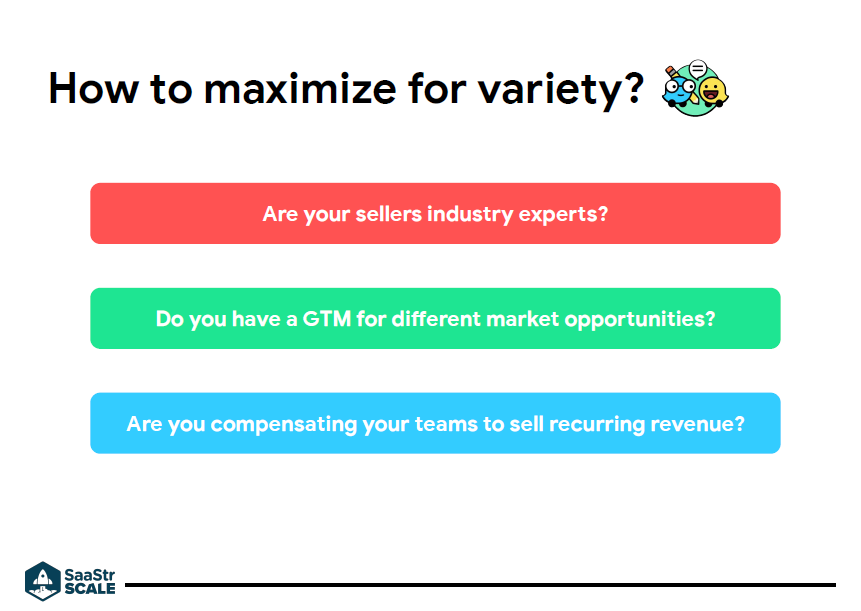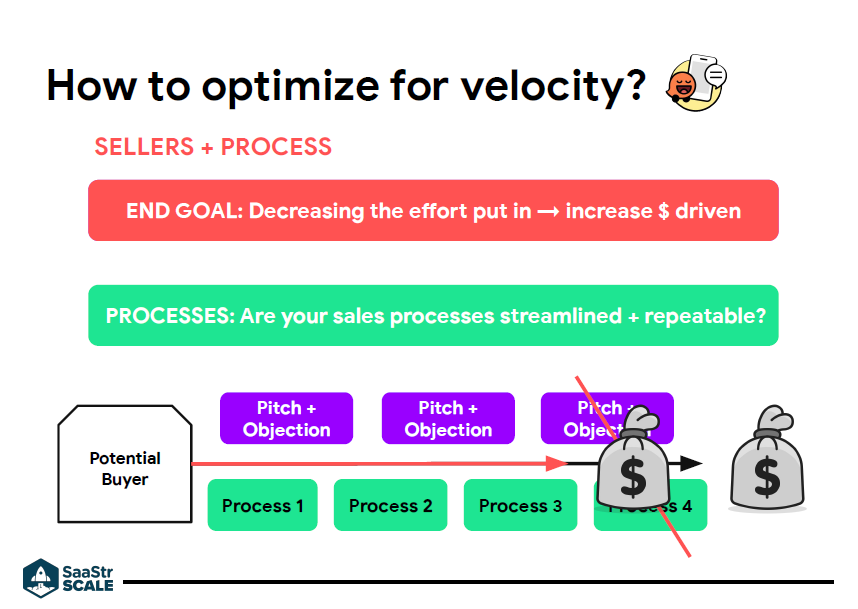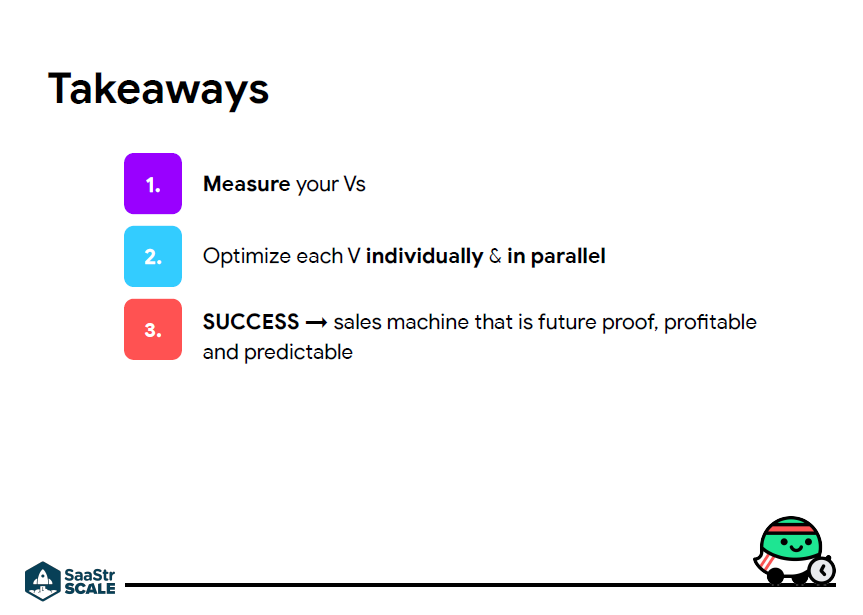Scaling a sales organization isn’t easy. Knowing which metrics matter and how to analyze them to increase your revenue and hit organizational sales goals is essential.
Waze sales executives Fernando Belfort, Head of SMB Sales, and Kendra Wrightson, Head of Sales Enablement, discuss optimizing sales processes for four essential data points: value, variety, volume, and velocity.
What makes a sales organization grow?
What’s the best way to grow a sales organization? You’re not the only SMB asking this question as you navigate perpetual pitches, closing clients, and growth.
Waze has four core pillars that help them grow, scale, and optimize its sales. Let’s look at them:
Value
Waze defines value as the deal size or amount of the contract. Since they sell ads, value also means how many recurring clients contribute to a significant chunk of their yearly revenue by assessing six-month or year-based account value.
Here are some questions you can consider as you seek to maximize for value:
- Are you considering both your wins and losses?
Evaluate the value of the accounts you won and assess how you can increase that value further. Additionally, look at why you’re not closing more accounts by zooming into the reasons you’re losing out on them.
It also helps to analyze which accounts you started working with but didn’t continue. Identify why they’re not coming back or why you’re losing out on accounts.
- What is your average deal size pitched vs. closed?
Most organizations make the mistake of just noticing the average value of each existing account, overlooking another crucial element: the average pitched amount.
The key to closing bigger deals is to pitch bigger amounts. As our sales team started pitching bigger, while doing a good job at showing the value of the product, our closed amount increased.
- Have you thought about your Service Level Agreements (SLAs)?
It’s important to ask yourself if you’re engaging your clients enough, helping them to want to invest more in your offerings. An excellent way to achieve this is by sharing data and insights with your clients—numbers that consolidate your efforts and show them they’re getting real results.
Pay attention to your SLAs and, depending on their level of investment and commitment, commit your time and resources back into your partnership with them. This has proven to be useful for Waze to prove the value of their accounts.

Variety
For Waze, variety means different types of client accounts and pitches.
Here are some questions you can use to maximize your variety:
- Are your sellers industry experts?
The knowledge level of your sellers contributes to their success. Industry experts know how to communicate with a specific client, using their vocabulary and knowing their market trends and changes. Industry experts can communicate more effectively with everyone in an industry—from junior employees to CMOs. This expertise requires team training and seller education.
- Do you have a Go-to Market (GTM) for different market opportunities?
In the beginning, we had a huge team trying to sell to both small and large accounts, which wasn’t very helpful in achieving sales goals and revenue targets.
To test your go-to-market strategies, understand the different opportunities, verticals, and company sizes in the market. You can then create distinct roles with different responsibilities and dedicated teams, depending on the market opportunity you want to monetize.
- Are you compensating your teams to sell recurring revenue?
Compensation is a great motivator to make your team care and think about different clients and which verticals are likely to get higher revenue.
Create a compensation strategy that defines what compensation will be, what bonuses you’ll provide, and how you will incentivize your team for thinking and acting in alignment with your sales variety mindset.

Volume
Volume refers to the number of leads, pitches, closed deals, and customers.
To maximize your volume, consider how and who.
- How: What sources are the most popular to gather leads?
When maximizing value, questions like how you’re getting clients, where your leads are coming from, and most profitable lead sources are important to think about.
However, the most obvious course of direction for every sales team that wants to increase their value is to employ a sales development team and hire people for cold calling to drive the revenue through increased value.
But this isn’t the best way to proceed.
A great way to maximize your volume is by looking at other areas within your most profitable lead sources you can leverage. Challenge yourself every month, and you might see a higher win rate than conventional methods.
- Who: Who makes up your revenue, onboarded vs. retained?
Once you’ve analyzed how you’re getting volume, analyze who contributes to your revenue the most—existing clients or new ones?
If you want to acquire more clients, create a monthly goal and create an action plan to achieve it with your team. At the same time, focus on the accounts you onboarded last month to ensure they’re also spending this month and the following ones to maximize your volume and revenue.

Velocity
Velocity refers to how quickly you can close a deal.
The best way to optimize your sales process for velocity is to focus on sellers and processes.
- Sellers: How quickly are they handling objections and closing?
Your sellers need to gather maximum information about the top objections they face from clients and perfect their pitch to address them spontaneously on the call. Work on the salesmanship of your sellers to help them become more confident and ready to close more deals faster.
- Processes: Are your sales processes streamlined and repeatable?
Speeding up sales isn’t just about seller skills; it’s also about streamlining your back-end processes. For example, once you get a potential buyer, decide how often sellers will get on a call with them, how you will handle objections along the way, and how sellers will input data to track their progress.
Your end goal should be to analyze which objections you can assess initially or which process stage can be removed to decrease the seller effort but maximize revenue.

